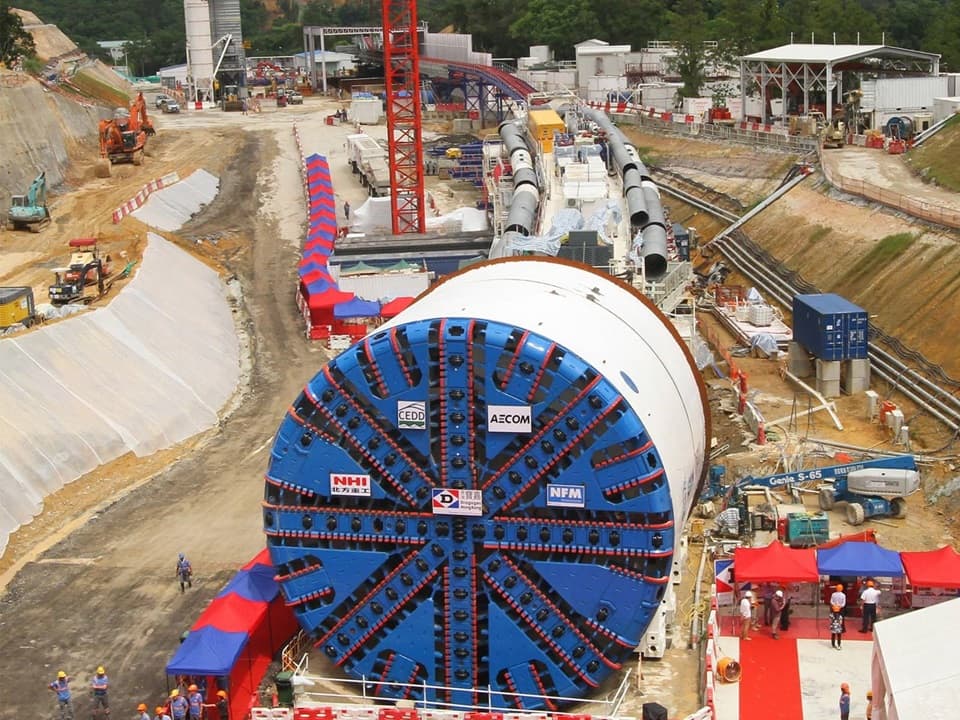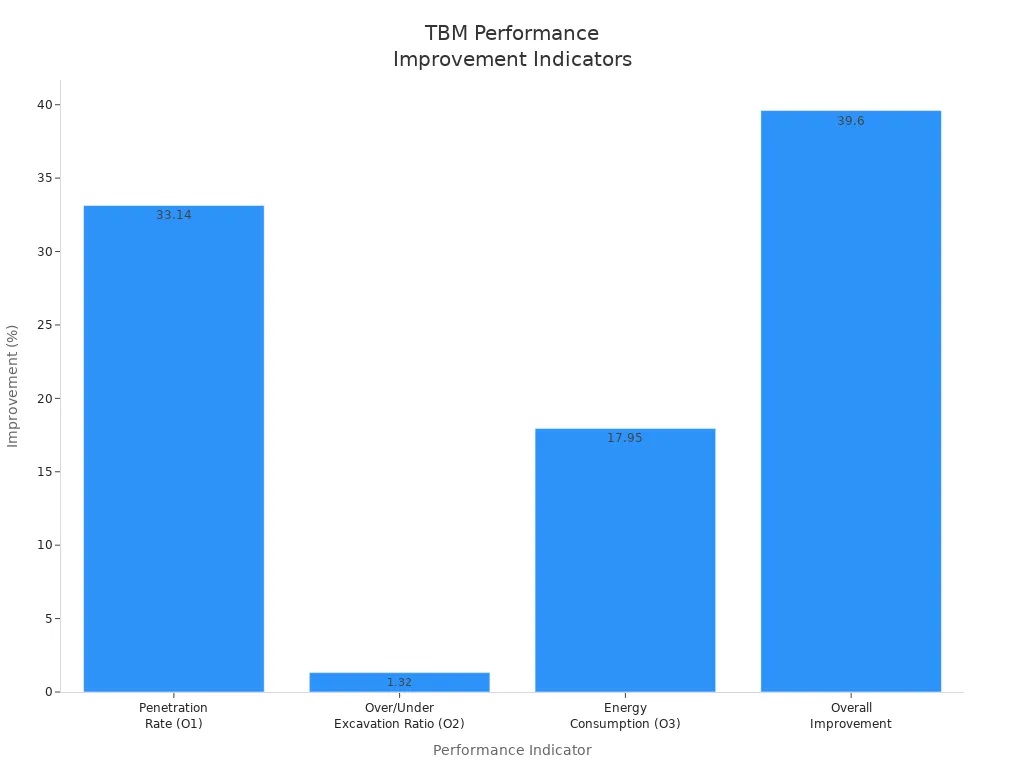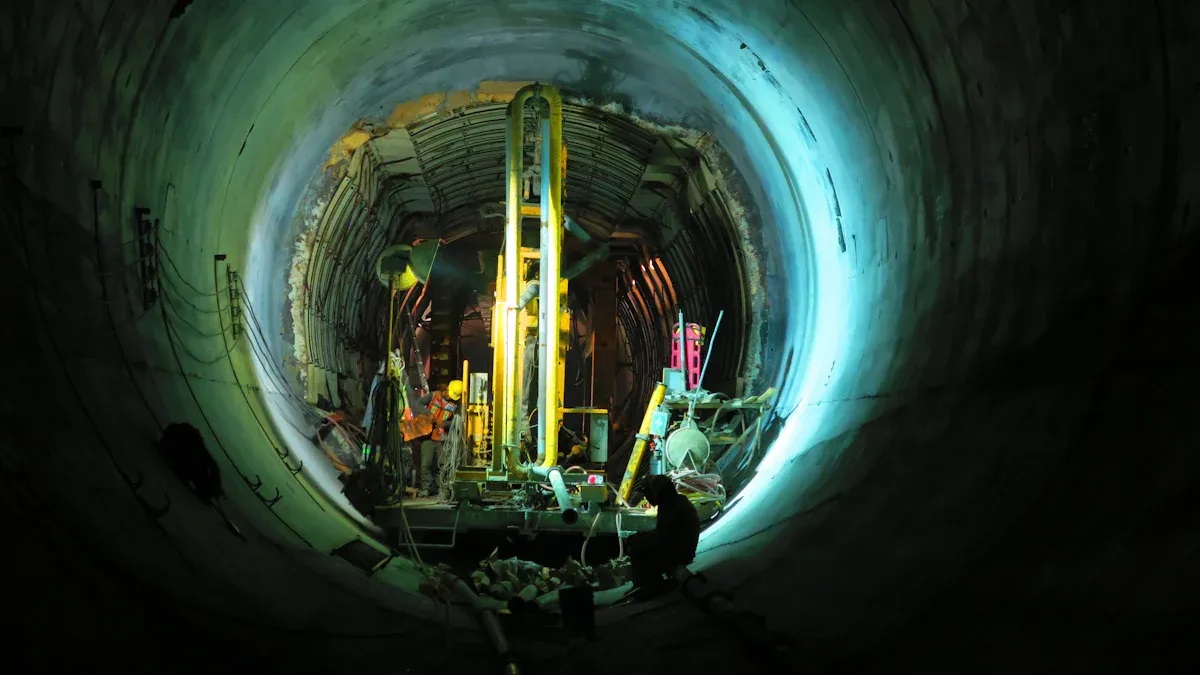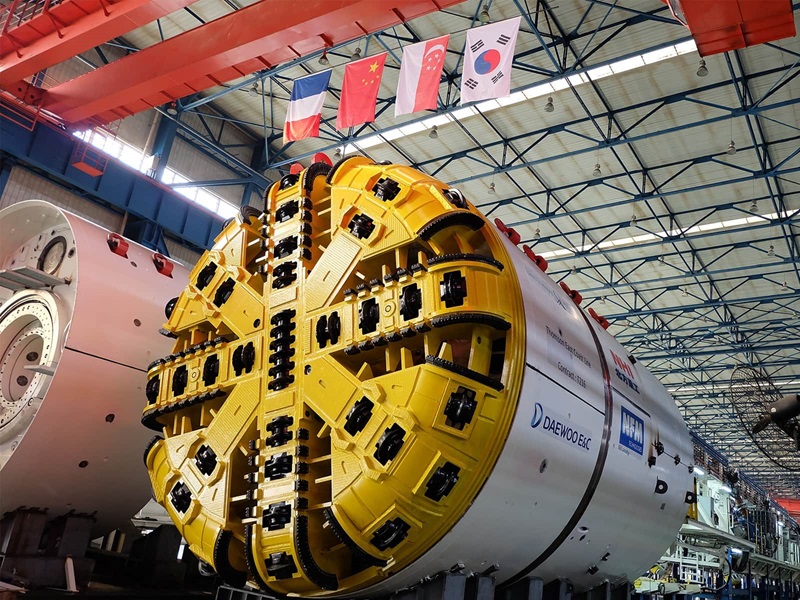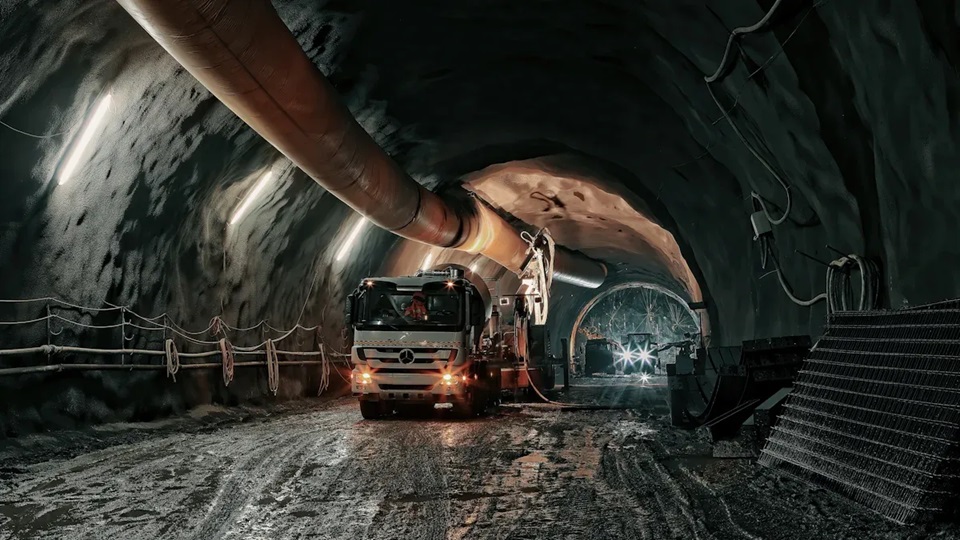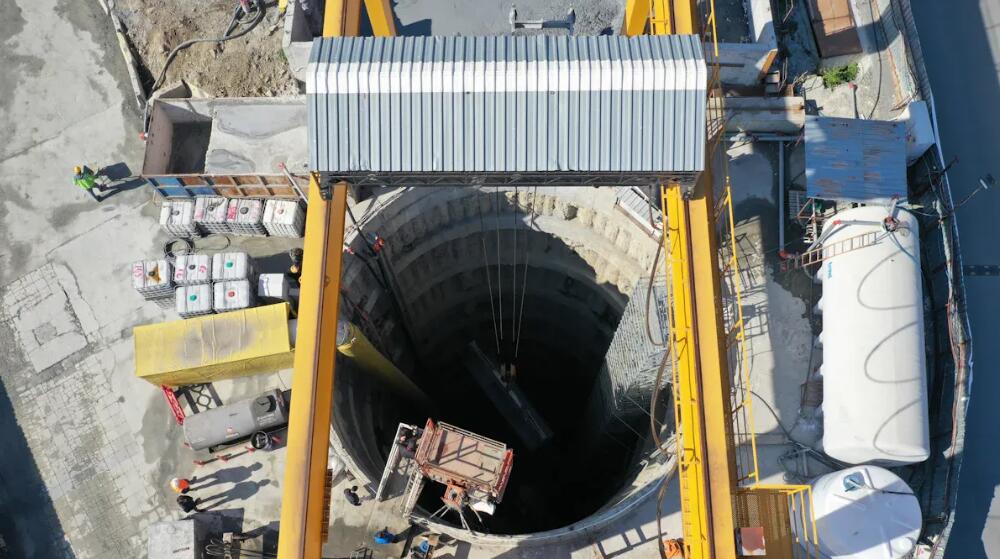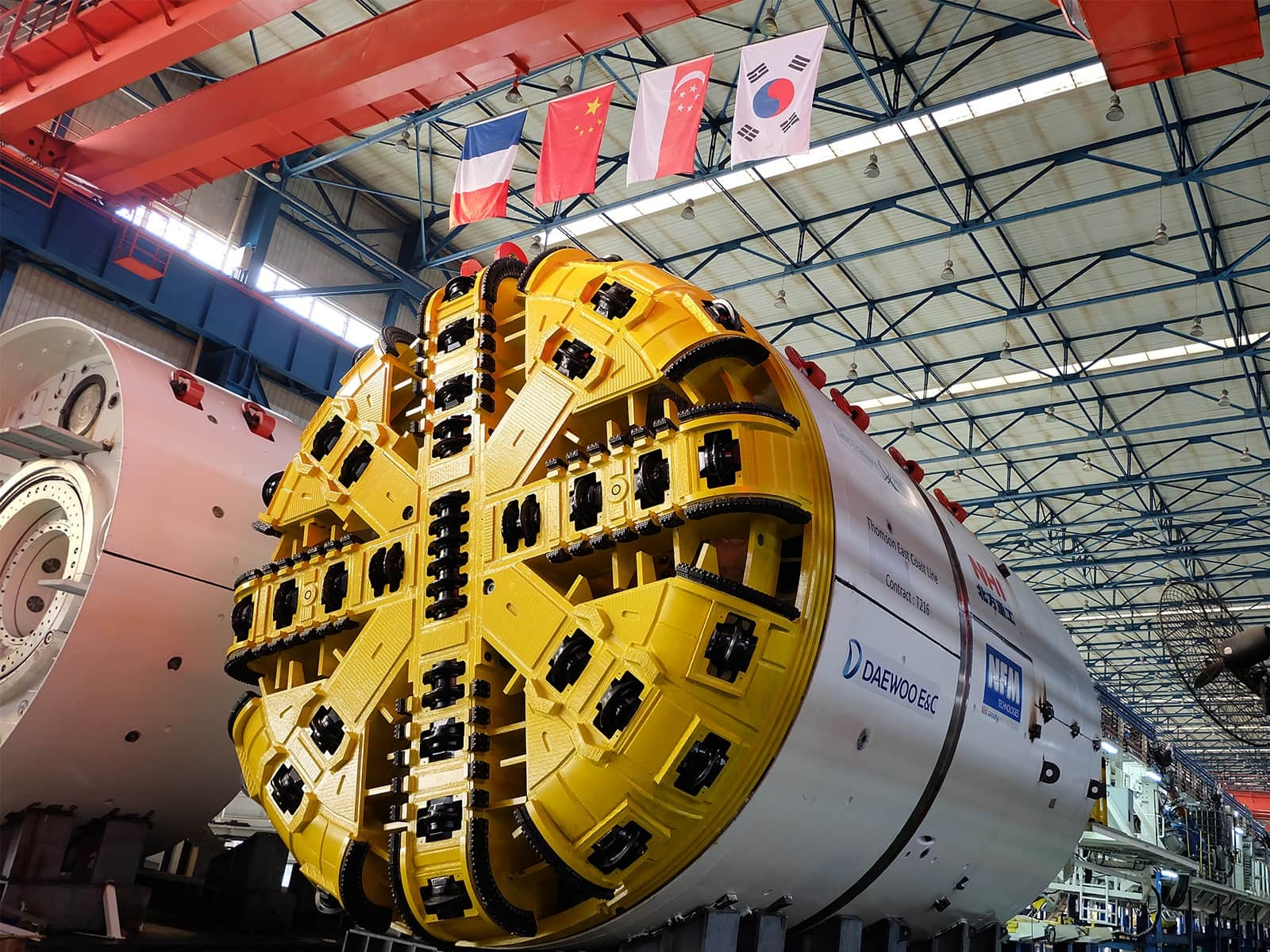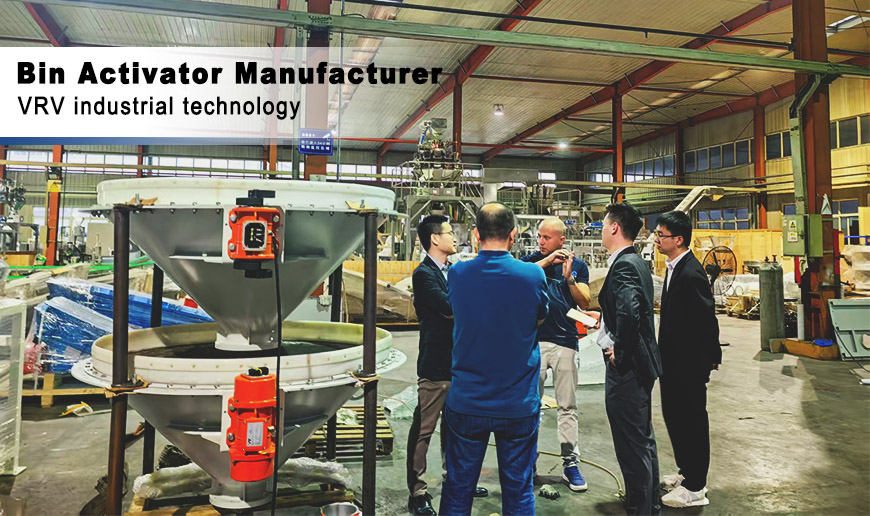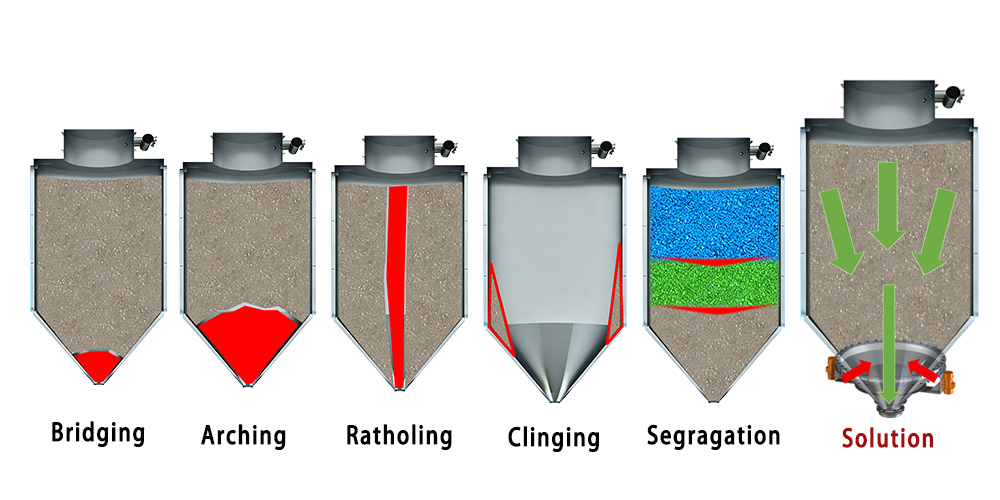Looking for TBM Tunnel Boring Machines for your project? You can buy new or refurbished machines. Top manufacturers and special dealers sell them. You can also find them on online sites. The market is getting bigger. It was worth $6.7 billion in 2023. It may reach $9.4 billion by 2030.
|
Metric |
Value |
|---|---|
|
Market size in 2023 |
USD 6,705.8 million |
|
Revenue forecast in 2030 |
USD 9,400.0 million |
|
CAGR (2023-2030) |
4.9% |
Many contractors pick refurbished machines to save money. New machines can cost more than $50 million. You should choose the type that fits your project. Think about cost and the supplier’s reputation.
Key Takeaways
-
Think about how much money you can spend. New TBM Tunnel Boring Machines cost a lot. Some new machines cost more than $50 million. Refurbished machines usually cost much less.
-
Look up suppliers before you buy. Find companies people trust. Read reviews to see if they are good. This helps you get a machine that works well. Good support is important too.
-
Check how well the TBM works and its warranty. New machines have brand new parts. Refurbished machines depend on how well they were fixed.
-
Think about what your project needs. Pick a new TBM for better technology. New ones are also more reliable. Refurbished machines save money. They are also ready faster.
-
Always ask if you can change the machine. Some suppliers can make machines fit your project. This helps you get what you need.
New TBM Tunnel Boring Machines
Major Suppliers
If you want a new TBM Tunnel Boring Machine, you have lots of options. You can buy from big manufacturers or from trusted dealers. Some websites, like Alibaba and Made-in-China, also sell these machines. Here are some famous suppliers you can check:
-
CRCHI (China)
-
CREG (China)
-
E-BERK (Turkey)
-
EM Korea (South Korea)
-
Herrenknecht (Germany)
-
Hitachi Zosen (Japan)
-
Hoban (South Korea)
-
JIMT - JIM Technology Corporation (Japan)
-
Kawasaki (Japan)
-
Komatsu (Japan)
-
LNSS (China)
-
Lovsuns (China/Canada)
-
NHI (China)
-
OGITEC - Underground Infrastructure Technologies (Japan)
-
Robbins (USA/China)
-
SELI (Italy)
-
STEC (China)
-
Tangxing (China)
-
Terratec (Australia)
-
Tianye Tolian (China)
You can get machines for different tunnel sizes and types. Some suppliers let you choose the diameter and features you need.
Tip: Always ask if you can change the size or add features. You might need something special for your tunnel work.
Here is a simple table showing prices for new TBM Tunnel Boring Machines by diameter and type:
|
Product Name |
Price Range (USD) |
Diameter / Type |
|---|---|---|
|
700 mm Slurry Balance TBM |
$20,000 |
700mm / Slurry Balance |
|
1500mm Pipe Jacking Machine |
$229,500 - $235,500 |
1500mm / Pipe Jacking |
|
2200mm Pipe Jacking TBM |
$325,900 |
2200mm / Pipe Jacking |
Evaluating New TBM Sellers
Picking the right seller is important. You want a machine that works well and lasts long. Here are things to check before you buy:
-
How strong the machine is
-
How much it costs to fix
-
If spare parts are easy to get
-
How much it costs over time
-
If the seller helps you after you buy
If you ask about these things, you can avoid trouble later. Good help means you get support fast if something breaks. Sellers you can trust will answer your questions and explain their TBM Tunnel Boring Machines clearly.
Refurbished TBM Tunnel Boring Machines
Refurbishing Companies
You might want to save money on your next project. Refurbished TBM Tunnel Boring Machines can help you do that. Some companies focus on making old machines work like new again. Here are a few you should know:
-
Herrenknecht: This company offers rebuilding services for TBMs. They work with clients all over the world.
-
Robbins: Robbins has a lot of experience with refurbishing TBMs. They have worked on projects in places like Vietnam.
These companies take used machines, fix them up, and make sure they are ready for new jobs. You can find both small and large TBMs through these services.
Online Marketplaces
You can also look for refurbished TBMs on online marketplaces. These websites list many machines from different sellers. Some popular sites include:
-
Equipment Trader
-
Truck1 USA
-
MachineryTrader
You can compare prices, machine sizes, and features. Refurbished TBMs often cost much less than new ones. Here’s a quick look at price ranges:
|
Type of TBM |
Price Range |
Notes |
|---|---|---|
|
Entry-level TBMs |
$20K - $60K |
Good for small projects |
|
Mid-range TBMs |
$180K - $195K |
Used in mining and medium tunnels |
|
Premium TBMs |
> $500K |
Advanced features, heavy-duty use |
Tip: Always check the seller’s reviews before you buy. A trusted seller will answer your questions and share machine details.
Quality Checks
You want your refurbished TBM to work well. Good companies follow strict steps to check each machine. They look at every part and fix what needs repair. Here’s what the process looks like:
|
Procedure Type |
Description |
|---|---|
|
Inspection |
Careful check of the TBM and cutter heads for any problems |
|
Repair |
Fixing or replacing parts to make the machine work like new |
Some companies set rules for what counts as a full rebuild or just a simple fix. They also let you know what work was done, so you can feel confident in your purchase.
TBM Tunnel Boring Machines: New vs. Refurbished
Cost Comparison
New TBM Tunnel Boring Machines cost a lot more than refurbished ones. New machines can cost over $50 million. Refurbished machines cost much less. This big price gap helps you pick what fits your budget.
You should also think about how you will pay for your TBM. Here are some ways to get money for your machine:
|
Financing Option |
Description |
|---|---|
|
Commercial Banks |
Give loans for short or long time. Interest rates are usually good. |
|
Equipment Leasing Companies |
Let you lease machines. This helps if your credit is not great. |
|
Government Loans |
Have low interest and long payback times for buying TBMs. |
|
Private Lending |
Gives you money fast but may cost more in interest. |
If you want to spend less at first, refurbished TBMs are a smart choice. If you want new technology and have more money, a new TBM is better.
Performance & Warranty
Performance is very important when picking a TBM. New TBMs have all-new parts. They work fast and are very reliable. Refurbished TBMs can work well too. How well they work depends on how much fixing was done.
Here is a table to help you compare:
|
Metric |
New TBMs |
Refurbished TBMs |
|---|---|---|
|
Advance Rate |
Made with all new parts |
Can change based on how much was rebuilt |
|
Reliability |
Very high because of new parts |
Depends on how much was fixed |
|
Design Life |
Usually lasts 10,000 hours |
Can last as long if rebuilt well |
-
New TBMs have new parts, so they work their best.
-
Refurbished TBMs might have old parts, but some companies fix them to work almost like new.
-
How a TBM works in different ground is important for your project.
Robbins has a system to check quality. They give warranties on rebuilt TBMs that are like new ones. This is true if the TBM is made for many projects and meets their rules. Their rebuilt TBMs can last 10,000 hours. All parts are checked to be as good as new.
If you want to feel safe, ask about the warranty. Some sellers give strong warranties for refurbished TBMs if they follow strict rules when rebuilding.
Availability
Sometimes you need your TBM quickly. New machines take longer to make and deliver, especially if you want special features. Refurbished TBMs are often ready faster. You can find them online or from dealers who have them in stock.
If your project needs to start soon, a refurbished TBM can help you begin fast. If you can wait and want special features, a new TBM may be better.
When Should You Choose Each Option?
-
Choose a new TBM if you want the newest technology, high reliability, and custom features.
-
Pick a refurbished TBM if you want to save money, need it fast, or have a small project.
Tip: Always pick what matches your project, budget, and schedule. Ask sellers about support and warranty before you buy.
Choosing the Right TBM Option
Project Needs & Budget
Each tunnel project is unique. You need a TBM that fits your job and your budget. NHI sells both new and refurbished TBMs. You can get machines for small city tunnels or big country tunnels. NHI has many choices, so you get the right size and power for your work.
When picking a TBM, think about these things:
-
What kind of ground is at your site
-
The cutterhead design for better digging
-
Thrust force and torque for hard ground
-
How much maintenance is needed
-
Safety rules for your team
-
If the TBM is worth the cost
Custom Solutions from NHI
NHI can make TBMs just for your project. You can ask for special sizes or extra safety parts. NHI’s team helps you pick a machine that fits your tunnel and your money plan. They give support from start to finish.
Supplier Reputation
You want a supplier you can trust. NHI has been around for over 100 years. They own NFM and Robbins, which are big names in TBMs. NHI spends money on new ideas, so you get the latest tech. Their quality checks are strong, and they have worked all over the world.
NHI's Industry Leadership
Here’s what makes a supplier great:
|
Indicator |
Description |
|---|---|
|
Adherence to International Standards |
Follows ISO 9001 and CE rules for quality and safety. |
|
Production Capabilities |
Can make TBMs for any tunnel or ground. |
|
Performance Metrics |
Delivers on time and keeps clients happy. |
|
Quality Assurance Measures |
Uses audits and outside checks for every machine. |
NHI has won many awards and has lots of certificates. Their TBMs have set speed and reliability records.
Tip: Always check if the supplier has done big projects. Look for good support after you buy. Ask about service plans and warranties. This helps you avoid problems and keeps your project running.
When you match your project needs with the right TBM and a trusted supplier like NHI, you set yourself up for success. Take your time, ask questions, and choose the option that gives you confidence.
You can find new and refurbished TBM tunnel boring machines in many places. Trusted manufacturers, dealers, and online marketplaces have lots of choices. Refurbished TBMs work well and have set 36% of tunneling world records. Be careful when you shop. Do not skip risk checks. Do not pick the cheapest machine without checking its quality. If you want more information, look at these resources:
|
Resource Type |
Description |
Link |
|---|---|---|
|
Market Research Report |
Shows TBM market size, share, and future trends |
|
|
Consulting Services |
Gives help with market plans and competition |
|
|
Industry Insights |
Shares info about top TBM companies and trends |
Take your time. Compare your choices. Pick the TBM that works best for your project!
